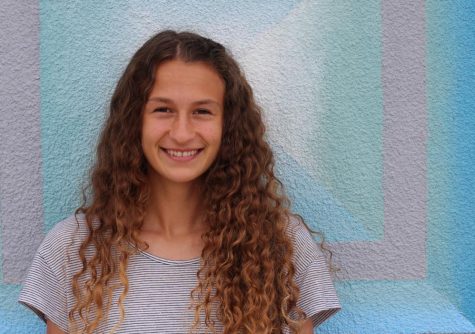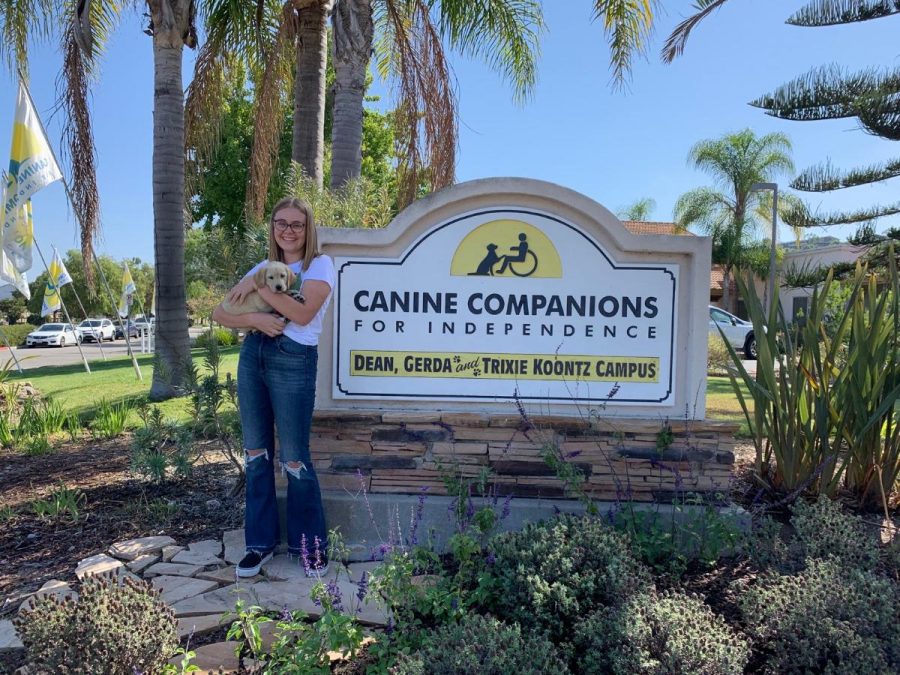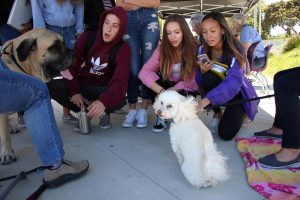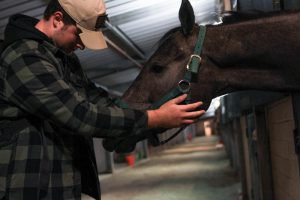Raising furry heroes
Junior Stella Hansen outlines the process to raising a guide dog.
Hansen poses with her dog, Isley, in front of CCI premises.
Every hero, including four-legged friends, must undergo some form of training in order to succeed in the service world. One puppy began its service career in the hands of junior Stella Hansen, who wanted to train a guide dog.
Hansen delved into a lengthy application process to become a certified volunteer puppy trainer with a non-profit organization called Canine Companions for Independence (CCI). In order to become accepted, CCI requires a phone interview and house inspection to ensure that the puppy is provided with proper necessities and a healthy home environment.
“The application was very thorough as they want to make sure the puppy raisers understand everything required and are fit to raise a puppy,” Hansen’s mother Emily Hansen said.
The qualified owner is then notified the name and color of the breed several weeks prior to getting the dog. As for Hansen, she received an eight-week old golden retriever lab cross named Isley on Friday, Sept. 19.
“I’ve always really loved dogs and have been passionate about animals,” Stella said. “Since third grade I’ve been wanting to raise one.”
Once the certified owner gets their dog, they have to teach them over 30 basic behavioral commands and expose them to an array of unique situations, including camaraderie with kids as well as other dogs and proper conduct in restaurants. This personal instruction period normally lasts about 18 months, alongside weekly mandatory puppy classes with trained professionals. Hansen will care for her dog under parent supervision and support.
“It’s a big responsibility to train [Isley] properly for her to succeed as an assistant dog,” Hansen’s father Scott Hansen said. “I feel like it’s a great opportunity to help make somebody’s life better.”
After the instruction period, the puppy then undergoes a matriculation course, also known as “puppy college,” where they formally train to become a guide dog for six months. If they pass matriculation, the dog will either become a hearing dog, mobility assistant or a team companion with a child. However, if the dog does not meet the course standards in matriculation, they can move onto a different career in the service world.
“In fact, one of the dogs I know actually went to a different company, MSA Security,” Stella said. “She’s now a bomb sniffing dog.”
While the process of raising a guide dog may demand commitment, Hansen believes that it is so much more than a lengthy procedure.
“I’m excited to teach a dog and know that I’m hopefully going to change someone’s life by providing them with that dog,” Stella said. “It not only helps them with their everyday skills but it can also help kids at school make friends and be more open.”
Your donation will support the student journalists of Carlsbad High School. Your contribution will allow us to purchase equipment and cover our annual website hosting costs.











